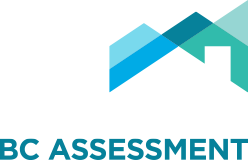As an internationally recognized leader in property assessment, BC Assessment follows the standards independently set by the
International Association of Assessing Officers (IAAO). These standards include the Assessment to Sales Ratio (ASR), which measures accuracy, and the Coefficient of Dispersion (COD), which measures uniformity.
The video below helps to explain both ASR and COD.
Accuracy and the Assessment to Sales Ratio (ASR)
An Assessment to Sales Ratio (ASR) is a measurement of how close the assessment of a sold property is to market value. In other words, how accurate is the assessment.
An ASR is calculated by dividing the property’s assessed value by the property’s selling price.
All ASRs in a jurisdiction or municipality are then sorted from the lowest value to the highest value, and the median (or middle value) is selected.
According to the
IAAO, the international standard for median ASR is to be between 90% and 110%. For the 2025 Assessment Roll, BC Assessment’s median ASR for single-family residential properties, strata residential properties (e.g. condos and townhouses) and non-residential are within the targeted range.
Property Type
| IAAO Standard
| 2024/25 BCA Target
ASR
| 2024/25 BCA Actual
ASR
|
Residential
| 90-110%
| 97-100%
| 97.5%
|
Strata-Residential
| 90-110%
| 97-100%
| 97.6%
|
Non-Residential
| 90-110%
| 95-100%
| 96.2%
|
These results indicate that property assessments accurately reflect market value.
Uniformity and the Coefficient of Dispersion (COD)
The Coefficient of Dispersion (COD) is the most commonly used measure to ensure that property assessments are uniform.
Uniformity refers to the consistency of assessments and ensures an equitable distribution of property taxes. The COD is a measure of the degree of uniformity in the ratio of assessed value to market value of sold properties within a jurisdiction.
In urban areas where properties are more similar, the COD will typically be lower when compared to rural areas, or non-residential (e.g. commercial, industrial) areas.
A low COD equals assessments that are more consistent and uniform (i.e. lower is better).
According to the
IAAO, the international standard for acceptable ranges of CODs for most residential properties is to be within 5-15%. For the 2025 Assessment Roll, BC Assessment’s COD ranges are within the targeted range for all property types, both urban and rural.
Property Type
| IAAO Standard
| 2024/25 BCA Target
COD
| 2024/25 BCA Actual
COD
|
SFD - Urban
| 5-15%
| 5-10%
| 8.4%
|
SFD-Rural
| 5-25%
| 5-15%
| 14.0%
|
Strata Res - Urban
| 5-15%
| 5-10%
| 5.2%
|
Strata Res – Rural
| 5-25%
| 5-15%
| 8.9%
|
Non-Residential
| 5-25%
| 5-15%
| 12.0%
|
These results indicate that property assessments are uniform and that property owners can be confident in the fairness and accuracy of their assessments.
RELATED INFORMATION:

